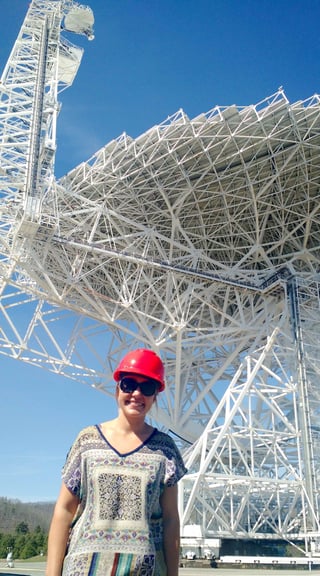Since securing rights to distribute the SKARAB FPGA supercomputer (originally designed for MeerKAT radio telescope array signal processing), my early interest in astronomy has been rekindled. The home-made optical telescopes I made pale in comparison to the pioneering DIY radio telecopes of Karl Jansky and Grote Reber, but it is gratifying to connect past and present interests at a mecca of science: the National Radio Astronomy Observatory (NRAO) in Green Bank, West Virginia.
Recently, the folks at NRAO invited me to demonstrate SKARAB live in their offices. No need to ask twice. I gladly jumped in may car and drove 700 miles through some spectacular country and mountains to meet Vereese Van Tonder, one of the luckiest electronic engineers on the planet...she gets to make this dish sing!
Green Bank Telescope is the world's largest fully steerable radio telescope, indeed, it is the world's largest movable land object! Operating from 0.1 to 116 GHz, the 100 meter diameter dish is actively controlled to provide great focal plane images (of the RF sort) to specialized receivers, like the ones Vereese designs.
Signals from such receivers are often processed in real-time to produce more useful time domain, frequency domain and direction information. Scientists at NRAO use previous generation FPGA computing hardware, known as ROACH2 (Reconfigurable Open Architecture Computing Hardware), developed by the Collaboration for Astronomy Signal Processing and Electronics Research (CASPER) community.
Decades ago, scientists at NRAO pinpointed the galactic center at Sgr A*, proving that a supermassive black hole resides at the center of our galaxy. Hundreds of other research results fuel our understanding of the cosmos, all from this bucolic valley in the Appalachians.
I look forward to learning of the new discoveries made by the clever scientists and engineers at NRAO; enabled by the top-notch processing power of the SKARAB.



